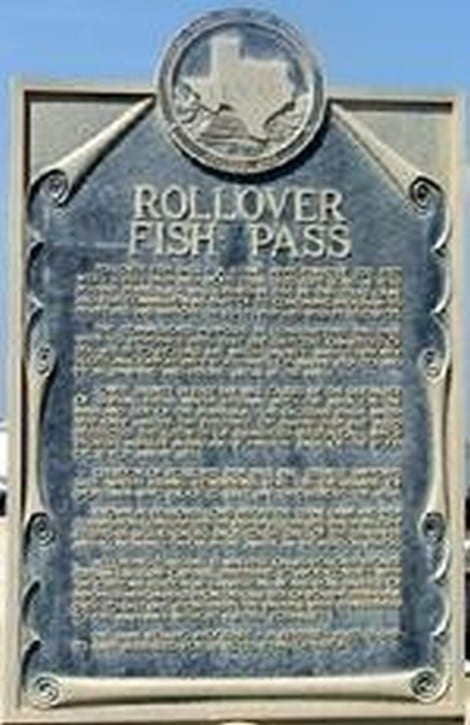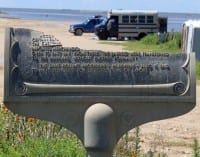
A strait approximately 200 feet wide, 5 feet deep and more than 1,600 feet long across Bolivar Peninsula – was opened in 1955 by the Texas Game and Fish Commission as part of its continuing program to perpetuate and improve the state’s fish and wildlife resources.
The commission’s purposes in constructing this pass were to introduce into East Bay sufficient quantities of sea water to increase bay water salinity, and to provide additional opportunity for travel of marine fish to and from spawning and feeding areas in the bay.
Lower salinity in East Bay was caused by the discharge of several fresh water streams into the area on the mainland side of the peninsula. This excessive fresh water not only limited the existence of marine fish but also restricted the growth of submerged vegetation, which provides nursery areas and forms the basis of the food cycle for marine life.

The marker was damaged
in Hurricane Ike
According to legend, it was first called Rollover because certain early ship captains preferring to avoid contact with the customs station at Galveston would roll barrels of imorted merchandise from the gulf side of Bolivar Peninsula over to East Bay. From there the barrels were transferred to the mainland without further formality.
The same rolling procedure – in reverse – also is said to have been used for selected items of export.

 Posted in
Posted in 
























